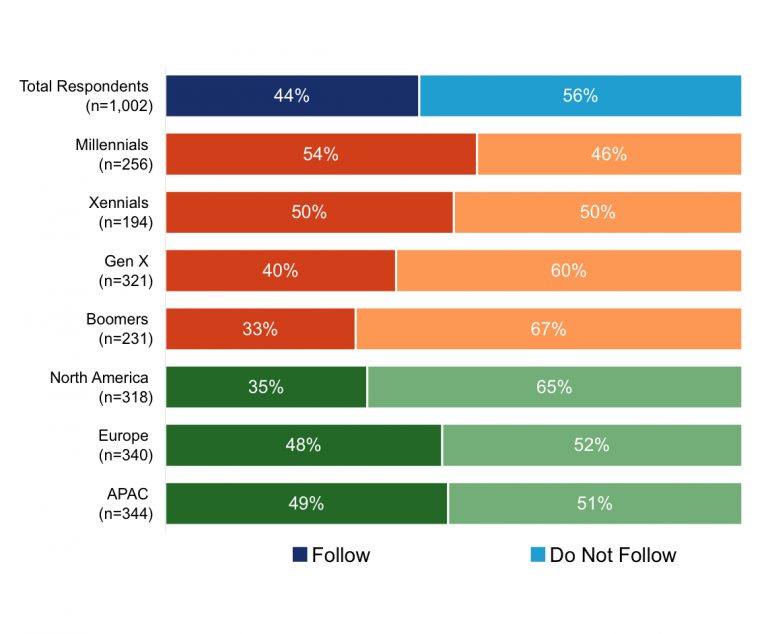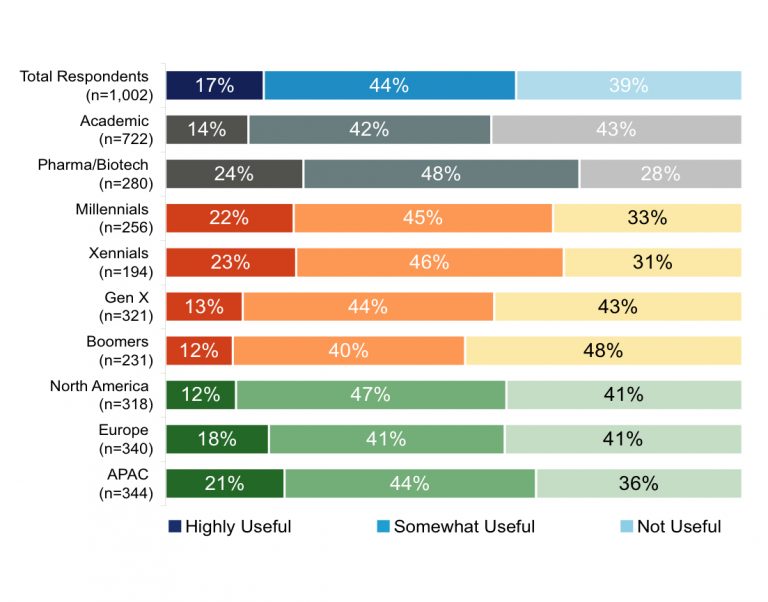
Influencer Marketing
While frequently associated with the marketing of products outside of the life sciences space, influencer marketing is set to play an important role in the future of our industry. Research has shown that a colleague’s product recommendation has always been exceptionally important. Influencer marketing is about cultivating relationships with personalities who influence the company’s targeted audience. In the life sciences, influencers can include prominent scientists, conference speakers, science writers, bloggers, and longtime customers.

Influencers in the life sciences must be convinced that the product will truly help to advance their follower’s research. Vendors typically seek out influencers and will refer to this individual as an “expert” and share their successes with the scientific community. This type of marketing is important because it adds an authentic voice to the brand. Unlike most other marketing communications, influencer marketing adds a trustworthy scientific gravitas.
Sponsored Content & Native Advertising
Sponsored content can come in a variety of forms, and is often associated with content marketing. This type of marketing usually comes in the form of an article, or “native advertising” in which a publication publishes an article written by a brand, designed to blend in with the rest of the publications normal content.
Although some regard native advertising as deceptive, the main goal is to inform and help solve problems first, while selling your product or service comes second. Many of our members find sponsored content to be believable, and a larger amount still say they find it to be useful

Sponsored content can be found on many different media channels. For social media, LinkedIn is a popular platform for professional sponsored content, whether it is articles, slide-shares, or whitepapers. However, a recent change to LinkedIn’s news feed often hides content unless you have interacted with the brand previously. If you are interested in seeing more sponsored content, following the brands you love will help them reach you.
Sponsored content may also appear in industry publications. A marketing group can publish a guest article as a way to get their voice out to scientists and researchers.
Experiential Marketing
In any industry, customers are receptive to experiential marketing because it is based on the idea that “try before you buy” helps customers feel more educated about a product and reduces their perception of risk. In the life sciences specifically, experiential marketing can come into play following an in-lab demo or at a scientific conference.
One of the most exciting developments in experiential marketing is virtual reality. Virtual reality creates the illusion that the virtual environment one creates is real. This can be useful as scientists, or the customers, can be placed in real-world workflow situations and guided to understand an instrument’s features by asking them to push a button. The suppliers can talk with their customers and interact with them - even bringing in experts from R&D to answer questions in real – time. Our members submitted dozens of ideas about how virtual reality could be applied to life science research and discovery. Some of their responses:
Virtual reality paired with livestream would aid in learning new techniques, new products, and new equipment. It could also be used/tailored to give “live” demos of new equipment that a lab might be interested in learning about or buying.
eLearning of how equipment works / protocol training / on-line support in solving problems with equipment/protocol (with sharing a screen and letting support team control your device) / preventive maintenance of equipment / proof of scientific & QC results and measurements (for instance absence of chromatogram corrections, images corrections and etc.).
In a research capacity, virtual reality could be used to simulate different environments and record brain activity, this work is being done at UCLA and elsewhere. In a more practical capacity, virtual reality would be great for teaching demos – we often need to show students how to perform procedures on the microscopic level and having a VR demo of that would be really helpful and cool.
There’s an obvious education component where these technologies could be used to learn more about particular subjects. Within actual applied research, it could conceivably be used to engage with these technologies within group settings where ideas and discussions are being held in different locations, e.g. interactive webinars, training, conferences, etc.
Allows for viewing interactions between designed molecules with wild type and mutant receptors to get a better idea what design would work best/most promising for subsequent drug design.
Following the metabolic fate of a new drug, the identification of secondary targets (to be aware of potential side effects) could be of great interest during drug design phases. It could help reduce costs associated with animal experiments.
It is clear that our members are anxiously awaiting the VR revolution –
Marketing to Life Scientists is Always Evolving
At The Science Advisory Board we also reviewed major suppliers’ Facebook and LinkedIn pages, however, despite large following, there appears to be little attempt to instigate meaningful conversation. Our members found there is little incentive to share experiences with their colleagues online because of this.
We also looked into mobile marketing and found our members' willingness to accept push notifications by text from a supplier’s app has risen significantly since we last asked the question in 2016. This, of course, cannot be applied to the entire population, because while one person may welcome texts or emails customizer to their product usage, another may think of it as an invasion of privacy.
Marketing techniques and technologies may change, and the way in which scientists want marketers to communicate with them will continue to change. However, one thing remains constant: truly novel, breakthrough products will – initially – “sell themselves” in the life science market. The brands that invest in marketing to reach out to scientists effectively when the imitators begin to appear will be the real winners.
Copyright © 2018 scienceboard.net



